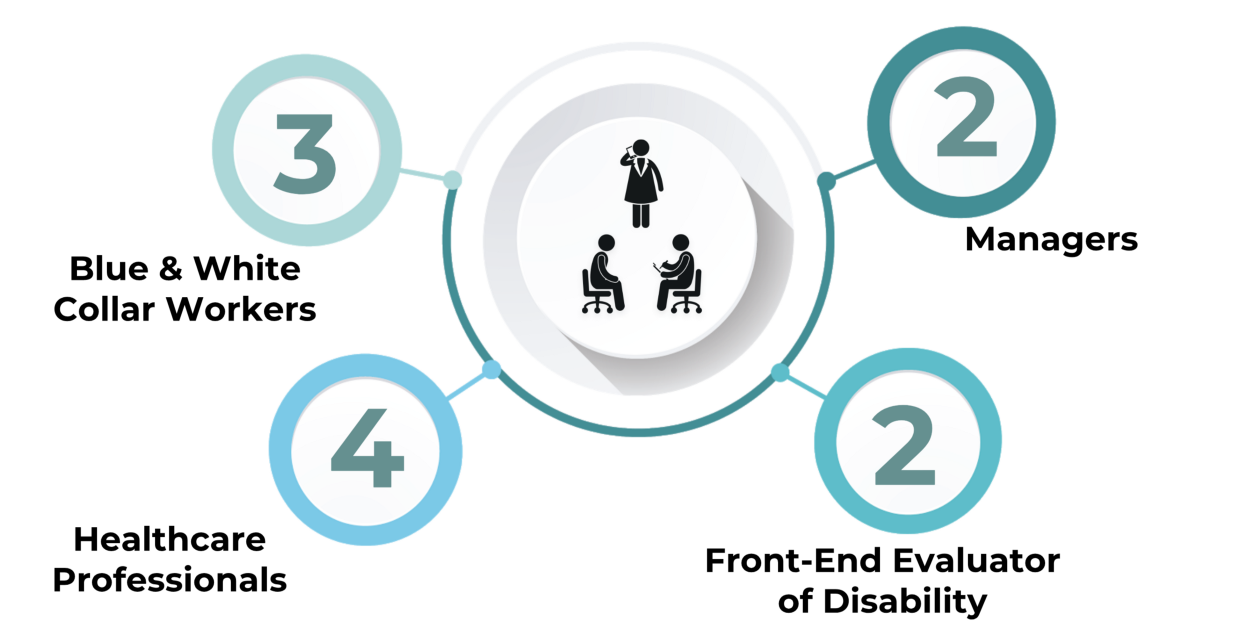UX Design: SAM, Self-Start Accommodations Management App
Making a positive change in the healthcare industry.
Role: UX Design
Softwares Used: Sketch, Figma, InVision, Illustrator, Photoshop
Duration of Sprint: 3 weeks
What is a workplace accommodation?
A workplace accommodation is an adjustment to a job task or job environment to meet the needs of an employee.
The problem
Yvonne Chan, Founder of Santé Circle Health, settled many disputes in past work experiences that involved an employee not having their needs addressed by their employer. The reason is mainly due to misunderstanding and miscommunication of an employee regarding their own needs to their employer. The employer, on the other hand, may also lack expertise and training on how to deal with an employer’s needs.
Proposed solution: SAM the App
SAM (Self-Start Accommodation Management), is a B2B app that would allow employers to understand employees’ needs in the workplace and manage workplace accommodations.
Employees would complete a self-assessment questionnaire on the app to understand their own needs. Based on the results, a summary report is generated and sent to the employer. This app would streamline the entire workplace accommodations process, and improve productivity in any organization.
Our team knew that in order for the app to be successful, it has to be attractive and functional to its users: the employees.
User-Centered Design Process
RESEARCH
Competitive Analysis: Identifying wellness apps in the market
We conducted a competitive analysis to see if there were anything else like SAM in the market. Aside from wellness apps, we also looked at healthcare providers. Through domain and market research, we found that the wellness app industry was evaluated at US $28 billion (2018), and was expected to grow to US$102 billion by 2023 (Liquid State 2018).
One app called MAS (Mobile Accommodation Solution), was the only app that had similar features like SAM. However, it was not user-friendly, intuitive, and inviting.
User Interviews: gathering insights about user
We conducted user interviews with employees that have gone through the process of getting accommodations at work to give us insight into their motivations and pain-points. The employees we interviewed were not limited to: healthcare professionals, managers, retired teachers, and steel plant workers.
PLANNING
User Personas: Defining primary users
Information Architecture: organizing and understanding research data
After we created user personas, we wanted to further understand their journey through their current work accommodations process, so we can find opportunities for design. We used a User Experience Map to present this information.
User Experience Map
We analyzed the current work accommodation process that an employee goes through, and found key insights in the communication process.
Key Insights:
Employees (EE) are frustrated by repeating their injury story every time they are passed to new personnel (can be Employer or Human Resources staff)
Employees (EE) want to facilitate the communication process so they can get to the treatment process faster
Design Solutions
We designed solutions to meet the Key Insights…
Key Insight #1:
Employees are frustrated by repeating their injury story every time they are passed to new personnel — the process feels too impersonal
Design Solutions:
Personify SAM to build empathy and connection with users
Use friendly and welcoming copy and imagery to create a safe and secure environment
Key Insight #2:
Employees (EE) want to facilitate the communication process so they can get to the treatment process faster
Design Solutions:
Educational on-boarding showing the process through the app so employees know what to expect
‘Who/What/Why/How/When?’ format questions are easier to follow
Set up expectation on how long the process will take
Design Decisions Based On User Flow
The most direct path in the user flow is when an employee completes a self-assessment questionnaire to understand whether or not they require a workplace accommodation. We made sure to focus on this path in the design by using large ‘yes’ and ‘no’ buttons to help users fly through the quiz without feeling overwhelmed.
UI
Visual Illustrations
The use of friendly and welcoming illustrations was very important to the app, in building a safe and secure environment for the users to complete their self-assessment. It also adda a personal touch.
TESTING
Changed speech bubble layout to friendly illustrations
Through Testing, we found that the speech bubble layout on the check-point screens added unnecessary stress to users when completing the self-assessment. This is because the speech bubble layout is used on other screens for the purpose of providing instructional information, i.e. home page, next steps. To avoid this, we used friendly and engaging illustrations instead to get employees through the self-assessment questionnaire as comfortable as possible.
Accessibility/Inclusive Design
Since Santé Circle Health is a company that strives to provide healthcare to all, our team had to consider accessibility and inclusive design as an important part of the app. We used the tool, Stark to check that the colors used on the self-assessment screens will be visible to someone experiencing color-blindness.
This was validated during testing with a color-blind user.
Other inclusive design features:
Option of selecting other common languages (French, Spanish)
Change of font size
Night Mode for higher contrast
View the full prototype:
Project Reflection
After the 3-week design sprint, our team was able to create SAM, the app based on initial ideation. We designed a user-experience and interface that meets the needs of its users, striving to transform lives and the workplace. Users are able to use this app to understand their needs better so that they can communicate with their employers. After all, happy employees make up a happy workplace!
“My mission is to make unable-people into able-people, through workplace accommodations”.
/ Yvonne Chan, Founder of Santé Circle Health and SAM App /
















